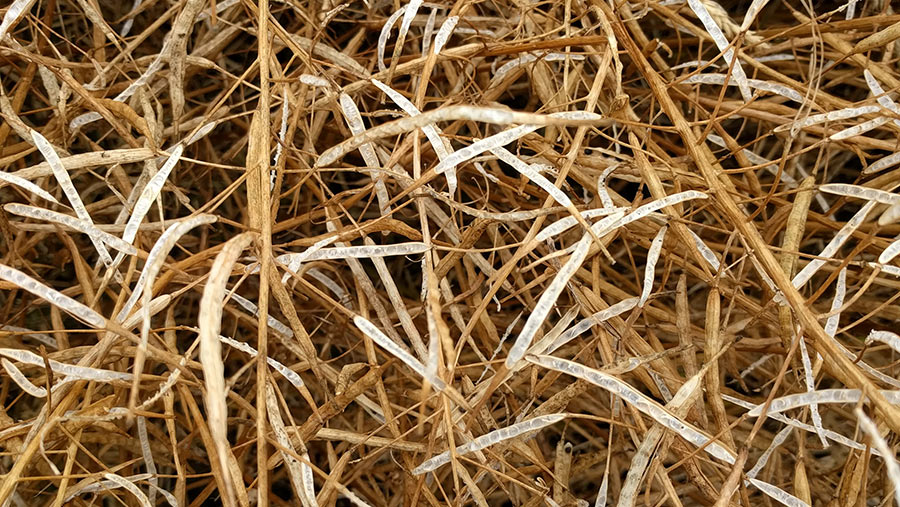Opinion: We’ll remember 2016 on farms for all the wrong reasons
 Hail shattered oilseed rape pods, destroying up to 50% of the crop © Jamie Stokes
Hail shattered oilseed rape pods, destroying up to 50% of the crop © Jamie Stokes During the first four months of this year, close to 20in of rain fell on this farm.
May was dull, but pretty dry with only a few wet periods, but June was a washout. We had over nine inches that month and some of it fell with almost biblical intensity, causing flooding in low-lying areas.
You should be aware that average annual rainfall in Norfolk, recorded over many years, is around 24in. So, we’ve had well over what we would normally expect in a year in six months.
Opinion: Brexit has dealt my business a punishing blow
Added to that, there was little sun until the hot spell during July and that came too late to help autumn-drilled combinable crops. Leaf diseases were rife as the rain fell, despite attempts to control them with sprays.
The predictable result is poor yields and even poorer quality of winter barley. Sadly, I fear we are not unique. Reports from across the country tell of similar problems with bushel weights well below spec for either malting or seed.
The only good thing is that most of these disastrous crops were fit to harvest during the July hot spell and at least did not need drying. Some areas have been more fortunate and good luck to those who farm in them. But prospects are dire for many.

David Richardson farms about 400ha of arable land near Norwich in Norfolk in partnership with his wife Lorna and his son Rob.
Maltsters who had pre-bought samples to set standards are wondering where they will get replacement consignments.
Seedsmen who had anticipated similar quality to supply farmers for autumn drilling are holding emergency meetings to discuss what to do.
And farmers who have harvested substandard samples must resign themselves to selling at depressed feed prices – hoping merchants won’t demand compensation when they fail to fulfill contracts as agreed.
As I write, we are just completing our first 60 acres of Hear rape and, although it hasn’t been weighed, it appears to have yielded reasonably well. Further south, where populations of cabbage stem beetles are greater, lack of neonicotinide protection has apparently been as disastrous as predicted.
Will spring barleys and winter wheats rescue returns from this harvest? Who knows? But given that those crops have lived through the same weather as those already harvested, it is difficult to be optimistic.
Severe storms
Short-strawed varieties notwithstanding, I have seen several fields flattened by the most severe storms. And in some local areas of Suffolk hailstones an inch in diameter decimated some crops, caused rape to shed its seed and stripped the leaves from potatoes, sugar beet and vegetables.
Cereal prices for normal-spec samples have risen a few £s per tonne it’s true, in response to sterling’s collapse following the Brexit vote, but if you don’t have the right quality or quantity of stuff in the barn that is of academic interest only. We can only hope those crops not yet fit to combine prove better when we get to them than current expectations.
We shall remember 2016 for all the wrong reasons and only some of them relate to the weather. Investment decisions, following a pretty ordinary 2015 have been, in many cases, put on hold.
I suspect the machinery trade is having an even worse time than farmers. Most other commodity prices remain in the doldrums although there have been modest signs of recovery in some cases, again because of sterling values since the referendum for which we will pay later.
Meanwhile, the control of Defra has been handed to a lady who has previously said she would abolish the CAP and, as far as we can tell, knows nothing about agriculture.
